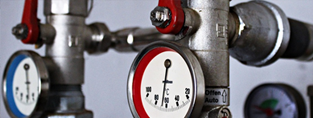
- (03) 5909 8218
- enquiry@fusionweld.com.au
Pressure Equipment Hazard Levels
January 14, 2016

The evolution of pressure equipment hazard levels, the quantification of special classifications that clarify industry-approved safety margins involves a gathering of dozens of industrial disciples. These classifications endow key factors with relevant context and cut through oceans of facts and factors to create a governing framework. In turn, the framework brings together engineering mathematics, mechanical fabrication and installation disciplines, and national guidelines to distill overwhelming accumulations of hazard-related design analysis data, organizing the complex information into a concise series of codes and standards. This classification process serves the industry by providing an absolute determination guide for hazard ranking, a guide that instructs designers in adhering to the AS/NZ 1200 guidelines regarding pressure vessel fabrication.
Lending Context to Hazard Assessment Practices
National and international guidelines affect the fabrication of pressure vessels, sending designers into a consulting huddle. Amendments are made to industrial standards, and, on top of this ever-changing flow of engineering data, new technology opens up newer methods of conducting established tasks. It's the job of parliamentary councils and judiciary boards to institute laws, but, further down the legislation scale, engineering boards amend engineering codes and work hard to add consistent and germane pressure equipment hazard levels that actually ease the burden on the designer. For example, the A, B, C, and D standard grading system identifies the hazard levels of pressure equipment alongside established Australian Standardization edicts, such as the AS1210 and AS3920.1 guidelines.
A Crucial Aid for Supporting Designers
Codes and guidelines are the final line of lawful protection, a beyond important part of the design process, especially when that design can affect life, property and environment. But these same codes serve a secondary purpose. They condense laws and engineering disciplines into an easy to follow frame of reference, one that can be passed on to the next level of workers. For example, installation engineers and maintenance technicians take note of hazard level classifications and use these important labels when assembling/dismantling and maintaining equipment. In short, every material strength calculation, every weld choice and engineering practice can be safely expressed in pressure equipment safety levels. The figure or figures are calculated with the single objective of avoiding catastrophic failure, which serves as a basis for registering the equipment within its specified application area.
Pressure equipment, the vessels, pipes and associated parts that form potentially harmful structures, contain immense amounts of gas and liquids under unimaginable stress. The fluid is chemically neutral or highly toxic, but the science of hazard level classification places a standardisation framework solidly in control of these constructs, ensuring safe design, installation and inspection rules above all else.
Contact Details
Fusion - Weld Engineering Pty Ltd
ABN 98 068 987619
1865 Frankston Flinders Road,
Hastings, VIC 3915
Ph: (03) 5909 8218
Optimized by NetwizardSEO.com.au
Recent Posts
- Compressed Hydrogen Storage Vessels: Material Selection, Design & Australian Standards
- Welding QA/QC in Oil & Gas Pressure Vessel Fabrication – Ensuring Code Compliance
- AS1210 vs ASME VIII Pressure Vessel Code: Key Differences for Australian Projects
- Mitigating Hydrogen-Induced Cracking in Pressure Vessels: Engineering and Material Strategies
- Storage Tank Solutions Australia: Field-Erected, Prefabricated & Self-Bunded Explained
- Reducing Environmental Risks: Self-Bunded Tanks in Australian Oil & Gas Operations
- Precision in Production: How Pressure Vessels Are Manufactured for Industrial Safety
- Shell & Tube Heat Exchangers: Improve Thermal Control & Energy Recovery in Petrochemical & Pharmaceutical Plants
- In-Service Inspection for Compressed Air Receivers for Power Plant Shutdown Prevention
- Power Plant Pipe Spooling Fabrication – Get Rapid, Code-Compliant Spools Ready for Installation
- Field Erected Tanks: Safe, Reliable On-Site Fuel Storage Solutions in Australia
- Custom Pressure Vessel Fabrication for Flammable Gases
Posts 2025
- Compressed Hydrogen Storage Vessels: Material Selection, Design & Australian Standards
- Welding QA/QC in Oil & Gas Pressure Vessel Fabrication – Ensuring Code Compliance
- View all articles…
Posts 2024
- Large Process Vessels: Optimising the Design for Maximum Efficiency [2025]
- Pressure Equipment Management System Installation: Detect Equipment Faults Early
- View all articles…
Posts 2023
- Pressure Piping System Inspection: A Gift of Safety for the Holidays
- Deaerator Inspections by Fusion-Weld Engineering and How They Reduce System Downtime
- View all articles…
Posts 2022
- How Fusion Weld Keeps Up With AS-NZS ISO 9001:2008 Standard
- Boiler Equipment Safety Inspection During the Summer Season
- View all articles…
Posts 2021
- Avoid These Factors and Practices that Contribute to Sealing Damage in Pressure Vessels
- Do's And Don'ts Of Industrial Boiler Inspection And Maintenance From Fusion-Weld
- View all articles…
Posts 2020
- What are the Risks and Hazards Involved in Pressure Vessel Equipment?
- How to Know if Your Pressure Equipment Needs Repair or Replacement?
- View all articles…
Posts 2019
- Factors that Contribute to Pressure Vessel Failure
- Pressure Vessel Regulations in Australia: What are the Mandatory Requirements?
- View all articles…
Posts 2018
- Pros and Cons of Spherical vs. Cylindrical Pressure Vessels
- What are the Different Hazard Levels in Pressure Vessels?
- View all articles…
Posts 2017
- Transportable Pressure Vessels: The Importance of Inspection and Safety Checks
- Fracture Mechanics and Stress Analysis of Cracks in Pressure Vessels
- View all articles…
Posts 2016
Posts 2015
- What Are Deaerators & Feedwater Vessels?
- Precautions and Safety for Compressed Air Receiver Vessels
- View all articles…
Posts 2014
- Demonstrating In-process Inspection Procedures
- Static Grounding Practices and Standards
- View all articles…